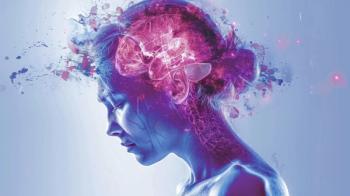
- Vol 31 No 1
- Volume 31
- Issue 1
The Psychiatric Dimensions of Narcolepsy
Narcolepsy, cataplexy: symptoms are broad and associated with a range of medical and psychiatric comorbidities. Here: diagnostic and treatment strategies and a look at the BOND study.
Narcolepsy, a disabling disorder that affects approximately 1 of 2000 people worldwide, is characterized by excessive daytime sleepiness (EDS) and frequent overwhelming urges to sleep or inadvertent daytime lapses into sleep. Cataplexy, the sudden, involuntary loss of skeletal muscle tone that lasts from seconds to 1 or 2 minutes, is most often triggered by positive emotions and occurs in up to 70% of cases. Cataplexy can commonly manifest as jaw sagging and/or knees buckling, but it can present more subtly or can result in temporary total-body paralysis, leading to the affected patient falling to the ground. Other characteristic symptoms include sleep paralysis and hallucinations, which classically occur at the transition from wake to sleep, and vice versa (ie, hypnagogic and hypnopompic). In addition, disrupted nighttime sleep is common.
Once they emerge, the symptoms of narcolepsy are usually lifelong, especially when the illness is associated with cataplexy. Although symptoms usually appear in late adolescence or early adulthood, on average there is a delay of 10 years before an accurate diagnosis is established. In part, the delay in diagnosis may stem from a general lack of physician awareness of narcolepsy; the broad array of symptoms that may be difficult to differentiate from symptoms of other disorders; and the wide range of both medical and psychiatric comorbidities associated with narcolepsy, including obesity, other sleep disorders, and psychiatric illnesses. Unfortunately, delay in diagnosing narcolepsy can contribute to the patient’s already significant disease burden, leading to decreased quality of life (QOL).
Diagnosis of narcolepsy
A diagnosis of narcolepsy depends on clinical history and diagnostic testing. Nocturnal polysomnography and the multiple sleep latency test (MSLT) can be used to confirm narcolepsy and evaluate for other causes of EDS. The MSLT quantitates sleep propensity as an objective measure of daytime sleepiness and involves a series of 5 naps separated by 2-hour intervals throughout the day. The diagnostic MSLT findings for narcolepsy include a mean sleep latency (across all 5 naps) of 8 minutes or less with rapid eye movement sleep during at least 2 of the 5 naps.
Accurately diagnosing narcolepsy can be challenging because of a variety of psychiatric comorbidities, including depressive disorders, bipolar disorder, and schizophrenia. The presence of comorbidities may partially mask the symptoms of narcolepsy and result in missed diagnoses. Similarly, narcolepsy without comorbid psychiatric conditions can be mistaken for psychiatric illness, including psychosis. It is important to note that obstructive sleep apnea, often seen in patients with narcolepsy, is also associated with psychiatric disorders.
In addition, there may be symptom overlap between narcolepsy and common psychiatric illnesses; for example, depressed patients may have both EDS and fatigue, and the hypnagogic hallucinations characteristic of narcolepsy may be confused with the hallucinations of psychosis. Furthermore, both patients with narcolepsy and those with psychiatric illnesses may have impaired cognitive performance. Because of the functional impairments characteristic of narcolepsy, including problems at work, at school, and in relationships, and reduced QOL, patients with narcolepsy without comorbid psychiatric disease may be nonetheless referred to a psychiatrist for evaluation.
Given the frequency of missed diagnosis and misdiagnosis of narcolepsy, it is important to have a high index of suspicion and to consider an evaluation for narcolepsy whenever daytime sleepiness is reported or observed. An overnight sleep study and MSLT evaluation should be considered in the diagnostic workup. In the more challenging cases, checking cerebrospinal fluid for hypocretin, which is often decreased or absent in narcolepsy, may help confirm the diagnosis.
An important consideration in the diagnostic evaluation of narcolepsy and other causes of sleepiness is the inclusion of family members or others who know the patient well. Persons close to the patient can often provide essential information that the patient is not fully aware of or is unable to adequatelyarticulate.
Treatment
Behavioral and pharmacological interventions form the basis of narcolepsy treatment. As with the diagnostic evaluation, inclusion of family members or others close to the patient can be of great value. These individuals can provide very useful information on the patient’s response to treatment, which will optimize treatment.
All patients should be encouraged to adopt a regular schedule of nighttime sleep and daytime activity. Irregular sleep-wake schedules and shift work can substantially worsen sleepiness in narcolepsy.
FDA-approved medications for the treatment of EDS in narcolepsy include modafinil, dextroamphetamine, methylphenidate, and sodium oxybate.1-3 Sodium oxybate is also FDA-approved for the treatment of cataplexy. TCAs and newer antidepressants (SSRIs and SNRIs) can also be useful for the treatment of cataplexy, but they are not approved by the FDA for this indication.
Psychiatric comorbidities
Several studies have examined the comorbidities associated with narcolepsy. Findings from a study of US patients with narcolepsy indicate that the most common psychiatric diagnoses (affecting almost 20% of the patients) are MDD and social anxiety disorder.4 Mood and anxiety disorders in general were found to be more common in patients with narcolepsy than in age-, sex-, and BMI-matched cohorts in the general population. In contrast, Jennum and colleagues5 found no significant increase in major psychiatric disorders in their study of 757 Danish narcolepsy patients and 3013 age-, sex-, and socioeconomic status–matched controls. On the other hand, Mayer and colleagues6 found an increased rate of depression in patients with narcolepsy. And, Kryger and colleagues7 report that patients with narcolepsy were more likely to have neurotic disorders, depression, personality disorders, or adjustment reaction.
The Burden of Narcolepsy Disease (BOND) study
The ongoing BOND study was designed to characterize the burden of illness and medical and psychiatric comorbidities associated with narcolepsy in a large US population derived from pooled claims-based databases that totaled more than 50 million subjects. Using these comprehensive nationwide claims databases, adult patients (aged at least 18 years and continuously insured for the 5-year study period of 2006 through 2010) with at least 1 diagnosis code for narcolepsy with or without cataplexy were identified (n = 9312). A control sample of patients without narcolepsy was identified from the pooled databases and matched 5 to 1 on age, sex, geographic region, and payer (n = 46,559). Extensive subgroup analyses were performed to validate the narcolepsy population before any analyses were conducted. Patients and controls were compared with respect to psychiatric comorbidities, use of psychiatric medication, and health care costs.
Full results of the study are expected to be available by the end of the year.
Conclusion
Narcolepsy, a chronic, disabling condition, shares many features with psychiatric illnesses. These shared features include clinical manifestations, such as sleepiness or fatigue and hallucinations, as well as the use of some of the same medications used in treating psychiatric illness, such as antidepressants.
Unfortunately, many patients with narcolepsy experience a major delay before they receive an accurate diagnosis and appropriate treatment, most likely because of the confusion with other illnesses. A high level of vigilance for the possibility of narcolepsy must be maintained in evaluating all patients with evidence of sleepiness or fatigue, especially for patients whose symptoms remain despite therapy.
Disclosures:
Dr Ruoff is Clinical Assistant Professor at The Stanford Center for Sleep Sciences and Medicine and Assistant Program Director at the Stanford Sleep Medicine Fellowship in Redwood City, Calif. Dr Black is Consulting Associate Professor at The Stanford Center for Sleep Sciences and Medicine. Dr Ruoff reports that he attended the Advisory Board Meeting, October 25-26, 2012: Best Practices in Narcolepsy Management for Jazz Pharmaceuticals. Dr Black reports that he is a part-time employee of Jazz Pharmaceuticals.
References:
1. Morgenthaler TI, Kapur VK, Brown JM, et al; Standards of Practice Committee of the American Academy of Sleep Medicine. Practice parameters for the treatment of narcolepsy and other hypersomnias of central origin. Sleep. 2007;30:1705-1711.
2. Billiard M, Dauvilliers Y, Dolenc-Groselj L, et al. Management of narcolepsy in adults. In: Gilhus NE, Barnes MP, Brainin M, eds. European Handbook of Neurological Management. Vol 1. 2nd ed. Oxford, UK: Wiley-Blackwell; 2011:513-528.
3. Mignot EJ. A practical guide to the therapy of narcolepsy and hypersomnia syndromes. Neurotherapeutics. 2012;9:739-752.
4. Ohayon MM. Narcolepsy is complicated by high medical and psychiatric comorbidities: a comparison with the general population. Sleep Med. 2013;14:488-492.
5. Jennum P, Ibsen R, Knudsen S, Kjellberg J. Comorbidity and mortality of narcolepsy: a controlled retro- and prospective national study. Sleep. 2013;36:835-840.
6. Mayer G, Kesper K, Peter H, et al. Comorbidity in narcoleptic patients [in German]. Dtsch Med Wochenschr. 2002;127:1942-1946.
7. Kryger MH, Walid R, Manfreda J. Diagnoses received by narcolepsy patients in the year prior to diagnosis by a sleep specialist. Sleep. 2002;25:36-41.
Articles in this issue
almost 12 years ago
Final Parity Rule Fails to Address Psychiatrist Reimbursement Problemsalmost 12 years ago
No Need for Blood: Nine Alternatives to the Antidepressant Debatealmost 12 years ago
Refractory Psychosis: Treatment Options and Strategiesalmost 12 years ago
Doctor Dumplingalmost 12 years ago
Welcome New Board Members, and Congratulations!almost 12 years ago
Postpartum Psychosis: Updates and Clinical Issuesalmost 12 years ago
Managing Psychosis in Patients With Alzheimer Diseasealmost 12 years ago
More Than Meets the Eye: Spotting Medical Mimicsalmost 12 years ago
The Role of Electronic Cigarettes for Tobacco Dependence TreatmentNewsletter
Receive trusted psychiatric news, expert analysis, and clinical insights — subscribe today to support your practice and your patients.














